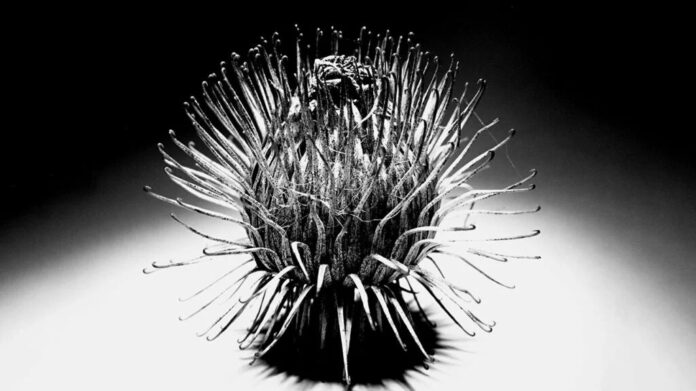
- There is a growing amount of consumers who want more naturally-derived skin care.
- Researchers presenting at Discover BMB say fruit from the cocklebur plant has antioxidant and anti-inflammatory properties that may make it useful as a skin protectant.
- Scientists also found cocklebur extracts helped reduce UVB damage and speed wound healing in 3D tissue models.
When it comes to skin care, more and more people are looking for naturally-derived ingredients. Previous consumer surveys suggested that many women want their skin care products to be considered all-natural.
Now new research suggests the fruit of a noxious weed called the cocklebur plant has antioxidant and
The findings are presented at Discover BMB — the annual meeting of the American Society for Biochemistry and Molecular Biology, March 25–28 in Seattle, WA.
The cocklebur plant — scientifically known as Xanthium strumarium — is a weed that grows in the summer. The weed grows with both male and female heads. When fully grown, it can reach as high as six feet.
The weed creates flowers with burs. These burs contain the “fruit” of the plant. When an animal or human brushes up against the plant, the burs can become attached to them, helping to spread them to other areas.
Cocklebur plants are native to areas of Southern Europe, Central Asia, and China. However, they can now be found in other areas of the world, including the United States.
The cocklebur has been used in
More recently, scientists have looked at using the cocklebur plant to help treat rheumatoid arthritis, diabetes, and cancer.
For this study, researchers used cell cultures and a
Upon analysis, scientists found the cocklebur fruit extracts increased both the production and degradation of collagen and sped-up wound healing. At lower doses, it also provided a protective effect against UVB radiation, but at the highest tested dose, it impaired the cell response to UVB.
“There are many published (pieces of) research identifying the composition of cocklebur fruit,” Eunsu Song, a doctoral candidate at Myongji University in South Korea and lead author of this study, explained to Medical News Today.
“Solvents play an important role in the confirmation of bioactive compounds in natural products. Most published research used methanol (to) extract solvents, which may not (be) usable for food or cosmetic ingredients. So, extraction with
“As a result,
While the research team’s findings are promising, they also cautioned that high doses of cocklebur fruit extract could be harmful. Therefore, additional research must be conducted to determine the safe levels for cosmetic and pharmaceutical applications.
“Toxicant characteristics in cocklebur happen due to carboxyatractyloside present in burs,” Song detailed. “It may be one of the reasons for toxic results in a high concentration of cockleburs. Not only carboxyatractyloside but also other compounds with high concentrations can result in toxicity. Therefore, it is very important to find the proper dose through acute toxicity tests.”
“Until now, we figured out whether cocklebur really helps wound healing and the production of collagen, which plays an important role in skin health at the molecular level,” she continued. “To move on to the next step, we have to determine mechanisms at the molecular levels which may involve. After that, we are going to test cocklebur with other animal alternative methods.”
Dr. Alexis L. Young, a dermatologist with Hackensack University Medical Center and clinical assistant professor in the Department of Internal Medicine at Hackensack Meridian School of Medicine, shared her thoughts about this research:
“This new study is very intriguing with (the) potential for (a) huge impact in the area of wound healing, maintaining the skin barrier but also in the world of cosmeceuticals,” she told Medical News Today. “The core fundamentals of anti-aging products include stimulating collagen growth, inhibiting the breakdown of collagen, applying antioxidants to prevent DNA damage and aging effects of free radicals, and increasing the elasticity and volume of the skin. In cell and tissue culture, this plant might have the ability to do those things.”
“Moisturizers containing hyaluronic acid add HA to the skin temporarily to plump the skin for about 15 minutes and then it’s gone,” Dr. Young continued. “A topical product that can actually stimulate HA production plus collagen would be novel. Currently available retinols which stimulate collagen growth and inhibit the breakdown of collagen can be very irritating to the skin. We are always looking for better-tolerated but effective agents for the skin.”
Medical News Today also spoke with Dr. Angela J. Lamb, an associate professor of dermatology at the Icahn School of Medicine in New York and vice chair of clinical strategy and operations, dermatology at Mount Sinai in New York.
Dr. Lamb said this report is exciting because it shows that there is something new on the forefront that could be used as a skin protectant, as well as an antioxidant:
“Naturally-derived products have been trending recently, and this is a new one that can easily be added to the armamentarium.
The largest question will be if something like this creates an allergic contact dermatitis because the actual plant does. It actually appears to be quite irritating so although the research is promising, as with anything new that is used, we have to see long-term if we need to use (it) on the skin if it can create more problems than it solves.”
Hits: 0












